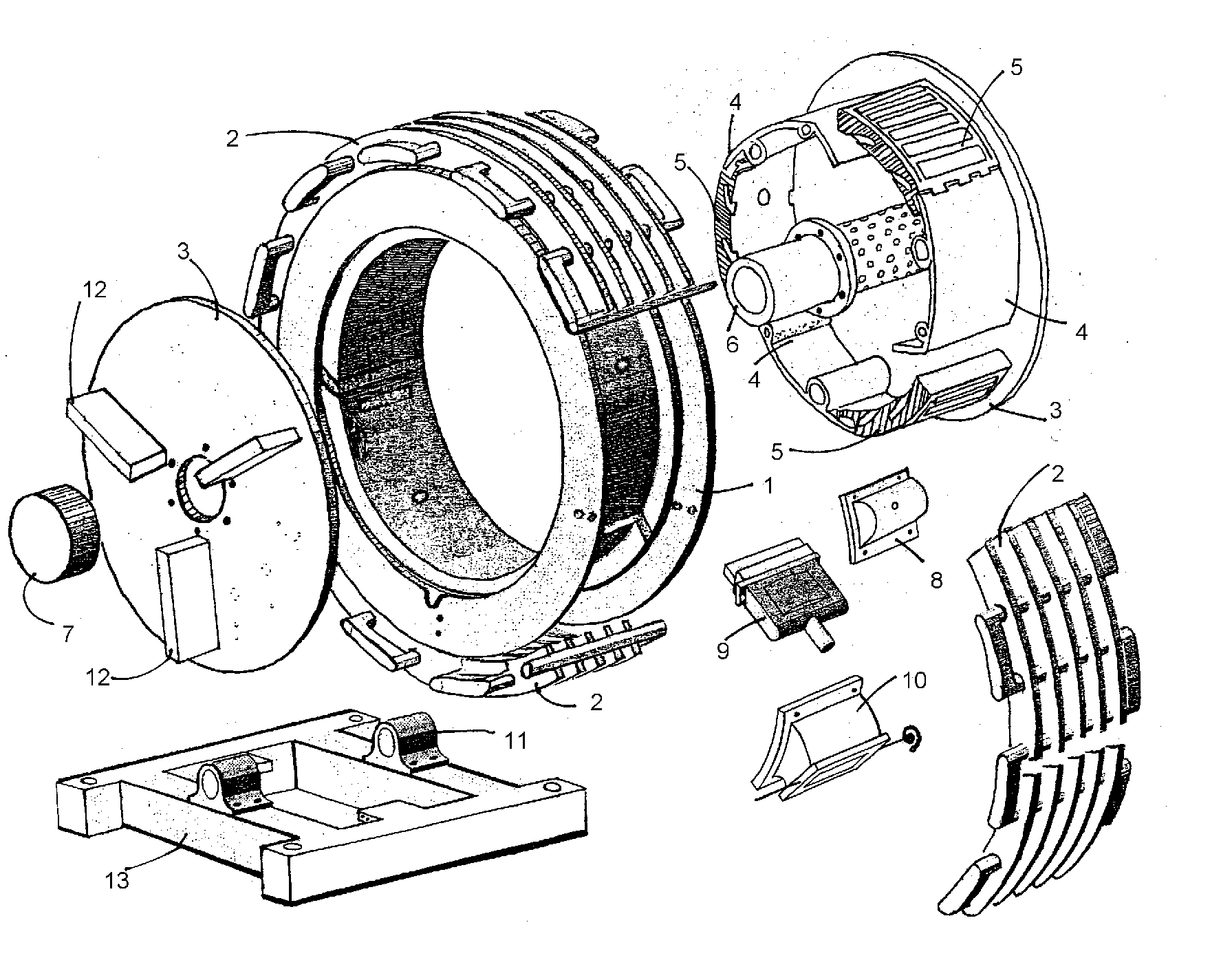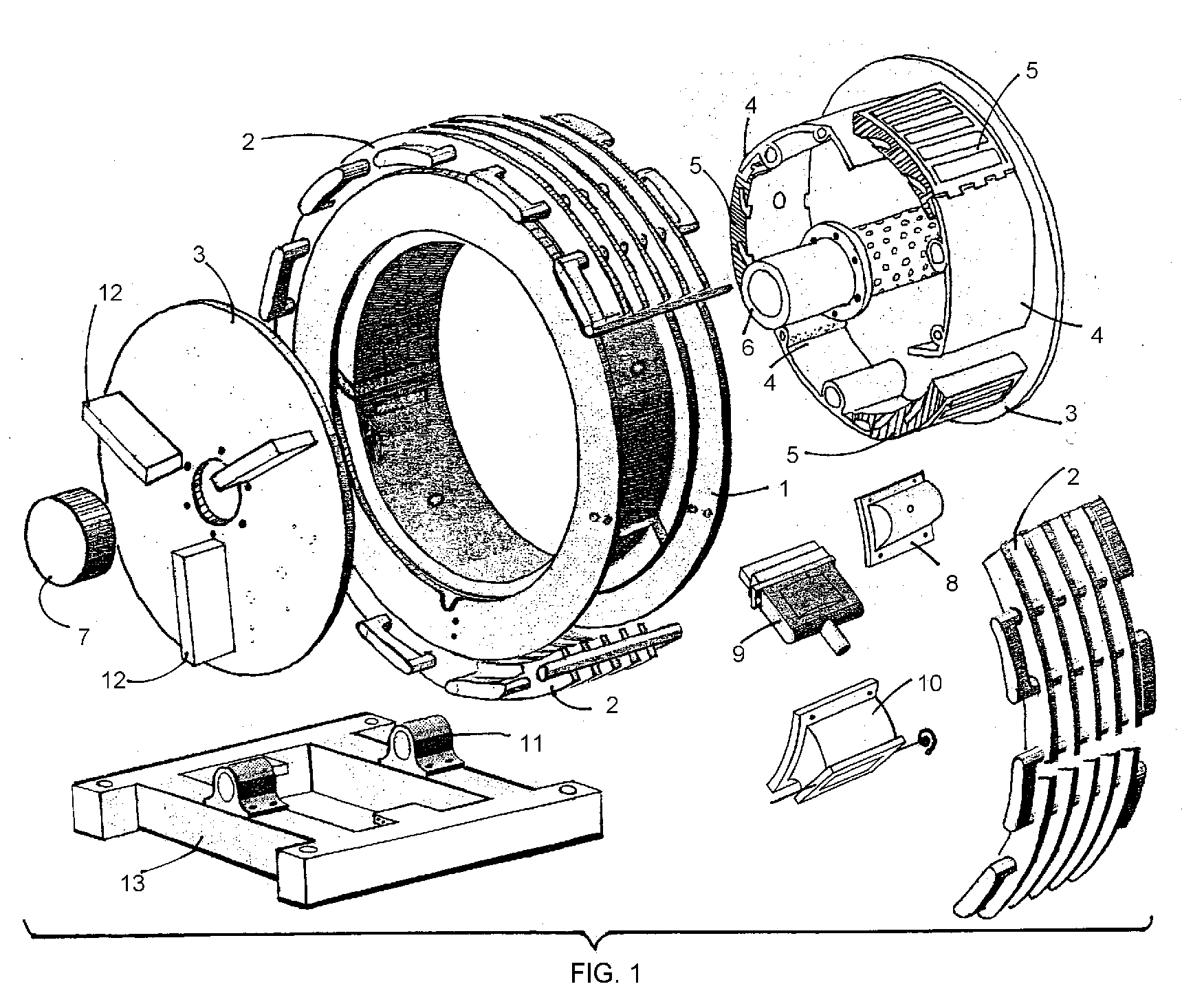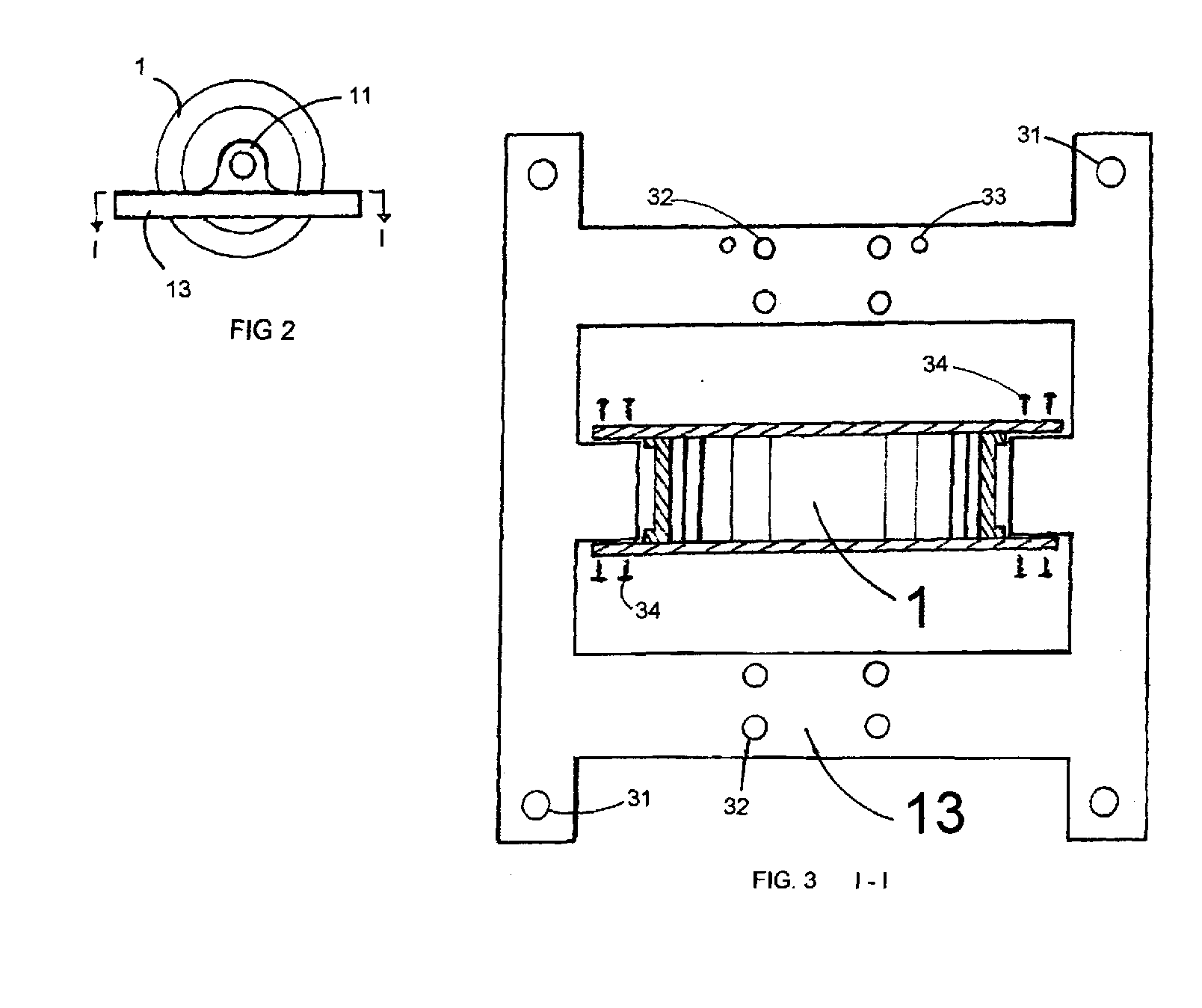Modular Rotary Engine
a rotary engine and module technology, applied in the direction of rotary or oscillating piston engines, rotary piston engines, air transportation, etc., can solve the problems of low reciprocating mass, heat problems, friction, waste of materials, etc., to reduce internal friction, reduce the effect of reciprocating mass and short rang
- Summary
- Abstract
- Description
- Claims
- Application Information
AI Technical Summary
Benefits of technology
Problems solved by technology
Method used
Image
Examples
Embodiment Construction
[0059] These engine works based on modules operating at the periphery of the rotor, each one consisting mainly of three chambers and one gate (9), and capable of using technology improvements in the area of computing, electricity, and electronics. A three module preferred embodiment is illustrated in the simplified expanded view in FIG. (1) and another cut view of the rotor inside the stator in FIG. (5) II-II, showing the main components.
[0060] Basically the engine has a stator (1), its form seems as a rectangular section toroid, (FIG. 18 cut VII-VII) where inside has solenoid gate valves (9), combustion chambers (8), and tuned ducts exhaust ports (10). Also contains all sort of standard parts used in Otto engines, such as sparkplugs (not showed), injectors (15), sensors (not showed), and a circular heat radiator (2).
[0061] It has a concentric rotor, reel resembling, in a short tall cylinder form, with the wall formed by ramps (4), as vanes forms; jointed by a packer (25) and a sp...
PUM
 Login to View More
Login to View More Abstract
Description
Claims
Application Information
 Login to View More
Login to View More - R&D
- Intellectual Property
- Life Sciences
- Materials
- Tech Scout
- Unparalleled Data Quality
- Higher Quality Content
- 60% Fewer Hallucinations
Browse by: Latest US Patents, China's latest patents, Technical Efficacy Thesaurus, Application Domain, Technology Topic, Popular Technical Reports.
© 2025 PatSnap. All rights reserved.Legal|Privacy policy|Modern Slavery Act Transparency Statement|Sitemap|About US| Contact US: help@patsnap.com



